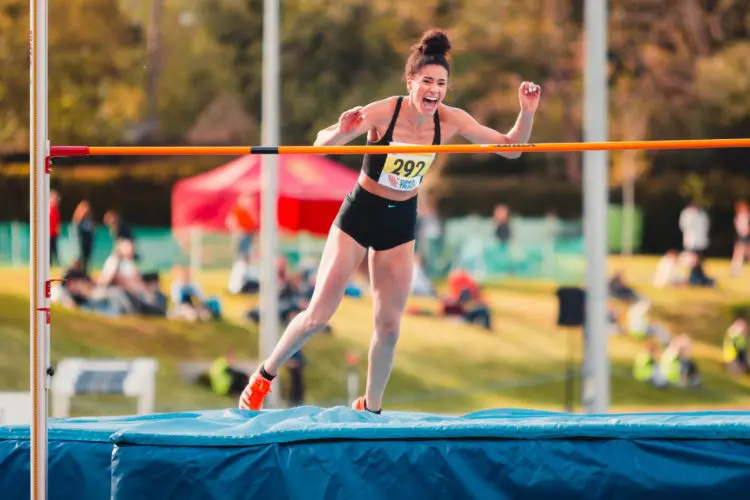“Perspective is everything,” says Laura Zialor. “If something is hard, I remember how far I’ve come.” It’s been 18 months since the 2022 British indoor high jump champion first ruptured her Achilles while competing for Great Britain and Northern Ireland at the European Team Championships in Poland. It’s been 14 months since an unfortunate training accident led to a second rupture on the same tendon, eight months since she started jogging again, and two months since she returned to high jumping in training.
Realistically, her return to full competition could take two years in total. It’s been a frustrating process – heartbreaking at times – but gratitude and a glass-half-full perspective have helped her deal with the mental and physical pain.
“As an elite athlete everything revolves around your sport, so when it’s taken away from you, you lose a part of yourself,” she explains. “It’s almost a mourning process.”
Zialor, who made her international debut at the 2022 World Athletics Championships in Oregon, is an overwhelmingly positive person, but when her Achilles re-ruptured it turned her life upside down and threw her whole belief system into question.
“I felt lost and hopeless...I was in a really dark, sad place for the first week or so post-rupture,” she wrote on Instagram after it happened. “But...I decided I’m not going to spend the next six months of my life being miserable, feeling sorry for myself or wishing time away. Life is too short for that. Life is too precious. We can’t control what happens to us, we can only control and choose how we act on it and move on from it.”
With a focus on the present a plan with task-based goals, and a realisation that there are many things to be grateful for in life, the 26-year-old is proud of how she managed the psychological side of her injury. “I always try to look at the positives, for example it gave me time with my family that I wouldn’t normally get,” she says. “Everyone has their down days, but most of the time I was taking it in my stride because I was focused on what I could do. My mindset shifted to a point where negative thoughts didn’t really enter my space. Each day I was just trying to be my best self.”
The Birmingham-based primary school teacher – who tutors, models and coaches to boost her income during school holidays – trains around her full-time working hours. As a supply teacher she benefits from flexibility, but she isn’t paid for holidays or if she’s off sick.
Needs must, and she returned to work on crutches, but her approach to training has been extra cautious second-time around. “There’s been no timeline on anything,” she says. “The first time I had the Olympics as a goal. This time it’s going to take as long as it’s going to take. Even now I don’t know when I’m going to compete because everything is dependent on my body, the data, and how I feel. I’ve been so diligent and cautious because I have to get this right. It can’t happen again.”

Rehabilitation and a return to training
July (first surgery) – September 2023
October (second rupture/surgery) – December 2023
“The injury hit so much harder the second time because I knew I wasn’t going to the Olympics. Post-surgery I felt despair, sadness and disbelief that I’d have to go through the hardest thing I’d done in my life all over again.”
January – April 2024
“There was a long period in my training where nothing really changed [after weaning off the boot]. It wasn’t really until I was cleared to jog that I started doing anything new.”
May – September 2024
Current training
Due to working full-time all Zialor’s sessions (except Saturday) take place after work.
“I’d say I’m now operating at 90 per cent of normal training,” she says. “I haven’t started high-level plyometrics and I’ve not yet done a jump off more than five strides.
“When I got ready to take my first jump [October 2024] there wasn’t a fear exactly because it was off a drill I’d been doing for a few weeks. I’d been so diligent and I’d done everything I could, but obviously instinct tries to stop you because it’s how you got hurt in the first place, so there was definitely a mental battle, and there still is. We started off with one-stride high jumps and for the first few weeks there was absolutely no focus on technique, all I was doing was trying to muster up the courage to jump.”
Favourite session: “A jump day – it’s a no-brainer!”
Least favourite session: “Pre-injury it would have been the lactic sessions, but now that I can do them I love them. When I was injured I dreamt of the moments where I’d run fast enough again to feel lactic.”
» Subscribe to AW magazine here, check out our new podcast here or sign up to our digital archive of back issues from 1945 to the present day here
